Tag Archives:
OpenAI’s Business Case Studies & Use Cases
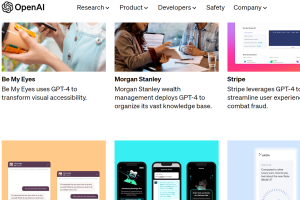
In today’s fast-paced world, businesses are constantly searching for new and innovative ways to stay ahead of the competition and artificial intelligence (AI) is one of the key technology enabler driving innovation and bringing competitive edge. One of the most promising AI technologies in recent years has been generative AI, which has the potential to transform the way companies operate and interact with customers. Among the leading generative AI platforms available today is OpenAI, a pioneer company in the field of generative AI that is dedicated to advancing AI in a safe and beneficial way. In this blog, we will explore OpenAI’s potential case studies and related use cases for …
Sequence to Sequence Models: Types, Examples
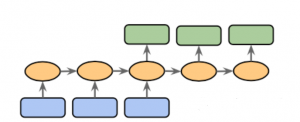
Sequence to sequence (Seq2Seq) modeling is a powerful machine learning technique that has revolutionized the way we do natural language processing (NLP). It allows us to process input sequences of varying lengths and produce output sequences of varying lengths, making it particularly useful for tasks such as language translation, speech recognition, and chatbot development. Sequence to sequence modeling also provides a great foundation for creating text summarizers, question answering systems, sentiment analysis systems, and more. With its wide range of applications, learning about sequence to sequence modeling concepts is essential for anyone who wants to work in the field of natural language processing. This blog post will discuss types of …
Sentiment Analysis & Machine Learning Techniques
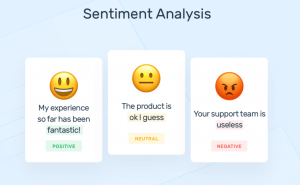
Artificial intelligence (AI) / Machine learning (ML) techniques are getting more and more popular. Many people use machine learning to analyze the sentiment of tweets, for example, to make predictions related to different business areas. In this blog post, you will learn about different machine learning / deep learning and NLP techniques which can be used for sentiment analysis. What is sentiment analysis? Sentiment analysis is about predicting the sentiment of a piece of text and then using this information to understand users’ (such as customers) opinions. . The principal objective of sentiment analysis is to classify the polarity of textual data, whether it is positive, negative, or neutral. Whether …
50+ Machine learning & Deep learning Youtube Courses

In this post, you get an access to curated list of 50+ Youtube courses on machine learning, deep learning, NLP, optimization, computer vision, statistical learning etc. You may want to bookmark this page for quick reference and access to these courses. This page will be updated from time-to-time. Enjoy learning! Course title Course type URL MIT 6.S192: Deep Learning for Art, Aesthetics, and Creativity Deep learning https://www.youtube.com/playlist?list=PLCpMvp7ftsnIbNwRnQJbDNRqO6qiN3EyH AutoML – Automated Machine Learning AutoML https://ki-campus.org/courses/automl-luh2021 Probabilistic Machine Learning Machine learning https://www.youtube.com/playlist?list=PL05umP7R6ij1tHaOFY96m5uX3J21a6yNd Geometric Deep Learning Geometric deep learning https://www.youtube.com/playlist?list=PLn2-dEmQeTfQ8YVuHBOvAhUlnIPYxkeu3 CS224W: Machine Learning with Graphs Machine learning https://www.youtube.com/playlist?list=PLoROMvodv4rPLKxIpqhjhPgdQy7imNkDn MIT 6.S897 Machine Learning for Healthcare Machine learning https://www.youtube.com/playlist?list=PLUl4u3cNGP60B0PQXVQyGNdCyCTDU1Q5j Deep Learning and Combinatorial Optimization Deep …
Top 10+ Youtube AI / Machine Learning Courses

In this post, you get access to top Youtube free AI/machine learning courses. The courses are suitable for data scientists at all levels and cover the following areas of machine learning: Machine learning Deep learning Natural language processing (NLP) Reinforcement learning Here are the details of the free machine learning / deep learning Youtube courses. S.No Title Description Type 1 CS229: Machine Learning (Stanford) Machine learning lectures by Andrew NG; In case you are a beginner, these lectures are highly recommended Machine learning 2 Applied machine learning (Cornell Tech CS 5787) Covers all of the most important ML algorithms and how to apply them in practice. Includes 3 full lectures …
Spacy Tokenization Python Example
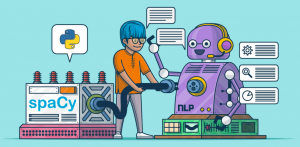
In this post, you will quickly learn about how to use Spacy for reading and tokenising a document read from text file or otherwise. As a data scientist starting on NLP, this is one of those first code which you will be writing to read the text using spaCy. First and foremost, make sure you have got set up with Spacy, and, loaded English tokenizer. The following commands help you set up in Jupyter notebook. Reading text using spaCy: Once you are set up with Spacy and loaded English tokenizer, the following code can be used to read the text from the text file and tokenize the text into words. Pay attention …
NLTK – How to Read & Process Text File
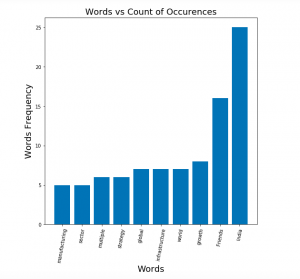
In this post, you will learn about the how to read one or more text files using NLTK and process words contained in the text file. As data scientists starting to work on NLP, the Python code sample for reading multiple text files from local storage will be very helpful. Python Code Sample for Reading Text File using NLTK Here is the Python code sample for reading one or more text files. Pay attention to some of the following aspects: Class nltk.corpus.PlaintextCorpusReader reader is used for reading the text file. The constructor takes input parameter such as corpus root and the regular expression representing the files. List of files that are read could be found using method such as fileids List …
Python – Extract Text from HTML using BeautifulSoup

In this post, you will learn about how to use Python BeautifulSoup and NLTK to extract words from HTML pages and perform text analysis such as frequency distribution. The example in this post is based on reading HTML pages directly from the website and performing text analysis. However, you could also download the web pages and then perform text analysis by loading pages from local storage. Python Code for Extracting Text from HTML Pages Here is the Python code for extracting text from HTML pages and perform text analysis. Pay attention to some of the following in the code given below: URLLib request is used to read the html page …
Python – Extract Text from PDF file using PDFMiner
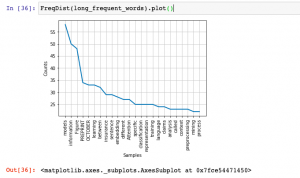
In this post, you will get a quick code sample on how to use PDFMiner, a Python library, to extract text from PDF files and perform text analysis. I will be posting several other posts in relation to how to use other Python libraries for extracting text from PDF files. In this post, the following topic will get covered: How to set up PDFMiner Python code for extracting text from PDF file using PDFMiner Setting up PDFMiner Here is how you would set up PDFMiner.six. You could execute the following command to get set up with PDFMiner while working in Jupyter notebook: Python Code for Extracting Text from PDF file …
NLTK Hello World Python Example
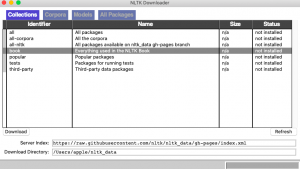
In this post, you will learn about getting started with natural language processing (NLP) with NLTK (Natural Language Toolkit), a platform to work with human languages using Python language. The post is titled hello world because it helps you get started with NLTK while also learning some important aspects of processing language. In this post, the following will be covered: Install / Set up NLTK Common NLTK commands for language processing operations Install / Set up NLTK This is what you need to do set up NLTK. Make sure you have Python latest version set up as NLTK requires Python version 3.5, 3.6, 3.7, or 3.8 to be set up. In Jupyter notebook, you could execute …
Sentiment Analysis Examples using Google Cloud NLP API

Sentiment analysis of a text document such as speech, articles on websites etc is about assessing sentiments associated with the document as a function of overall emotions expressed in form of different words. Sentiment analysis is primarily used for tracking voice of customer (VOC) by analyzing customer reviews, survey responses, etc., in social media websites such as Facebook, Twitter etc. The VOC can be related to products in general, an event, movies etc. In this post, you will learn about how to use Google Cloud NLP API for performing sentiment analysis of a text document. Java code is used for programming the sentiment analysis. Google NLP API – Sentiment Analysis Metrics …
How to Create Java NLP Apps using Google NLP API
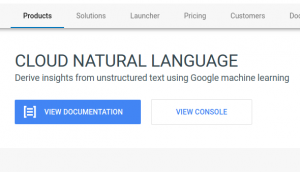
Natural language processing (NLP) is an AI-based technology which is used for creating apps related to speech recognition, natural-language understanding, and natural-language generation. Some of the applications related to NLP are content classification, sentiment analysis, syntactic analysis etc. In this post, you will learn about how to get set up with a development environment for creating NLP based apps using Google Cloud NLP APIs. Setup Eclipse-based Development Environment for Google NLP API The steps below would help you get setup with Eclipse IDE and Java-based development environment for developing apps using Google Cloud Natural Language API. Create Google Project: Create a project by logging into Google Cloud console. I created …
N-Gram Language Models Explained with Examples
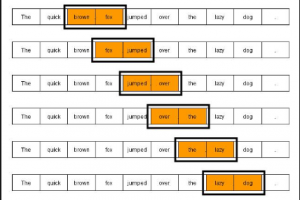
Language models are models which assign probabilities to a sentence or a sequence of words or, probability of an upcoming word given previous set of words. Language models are used in fields such as speech recognition, spelling correction, machine translation etc. Language models are primarily of two kinds: N-Gram language models Grammar-based language models such as probabilistic context-free grammars (PCFGs) In this post, you will learn about some of the following: Introduction to Language Models N-Grams language models Introduction to Language Models Language models, as mentioned above, is used to determine the probability of occurrence of a sentence or a sequence of words. Language models are created based on following …
Quick Introduction to Smoothing Techniques for Language Models

Smoothing techniques in NLP are used to address scenarios related to determining probability / likelihood estimate of a sequence of words (say, a sentence) occuring together when one or more words individually (unigram) or N-grams such as bigram([latex]w_{i}[/latex]/[latex]w_{i-1}[/latex]) or trigram ([latex]w_{i}[/latex]/[latex]w_{i-1}w_{i-2}[/latex]) in the given set have never occured in the past. In this post, you will go through a quick introduction to various different smoothing techniques used in NLP in addition to related formulas and examples. The following is the list of some of the smoothing techniques: Laplace smoothing: Another name for Laplace smoothing technique is add one smoothing. Additive smoothing Good-turing smoothing Kneser-Ney smoothing Katz smoothing Church and Gale Smoothing …
I found it very helpful. However the differences are not too understandable for me